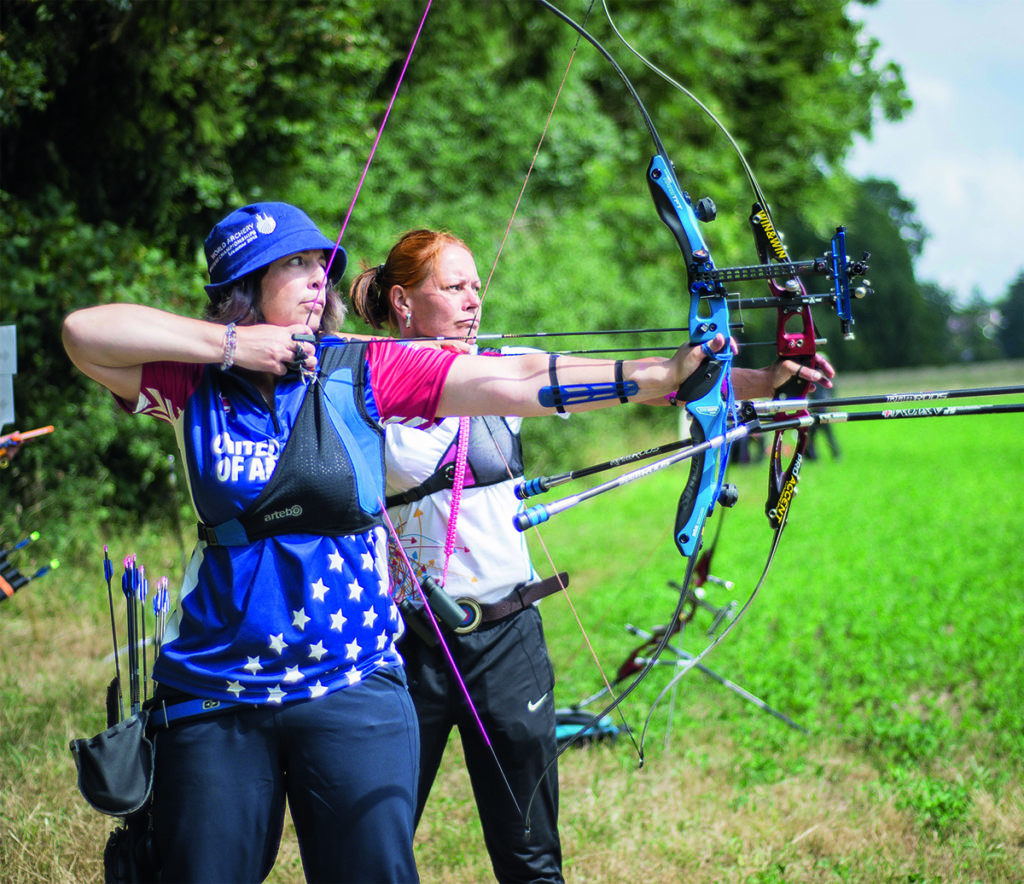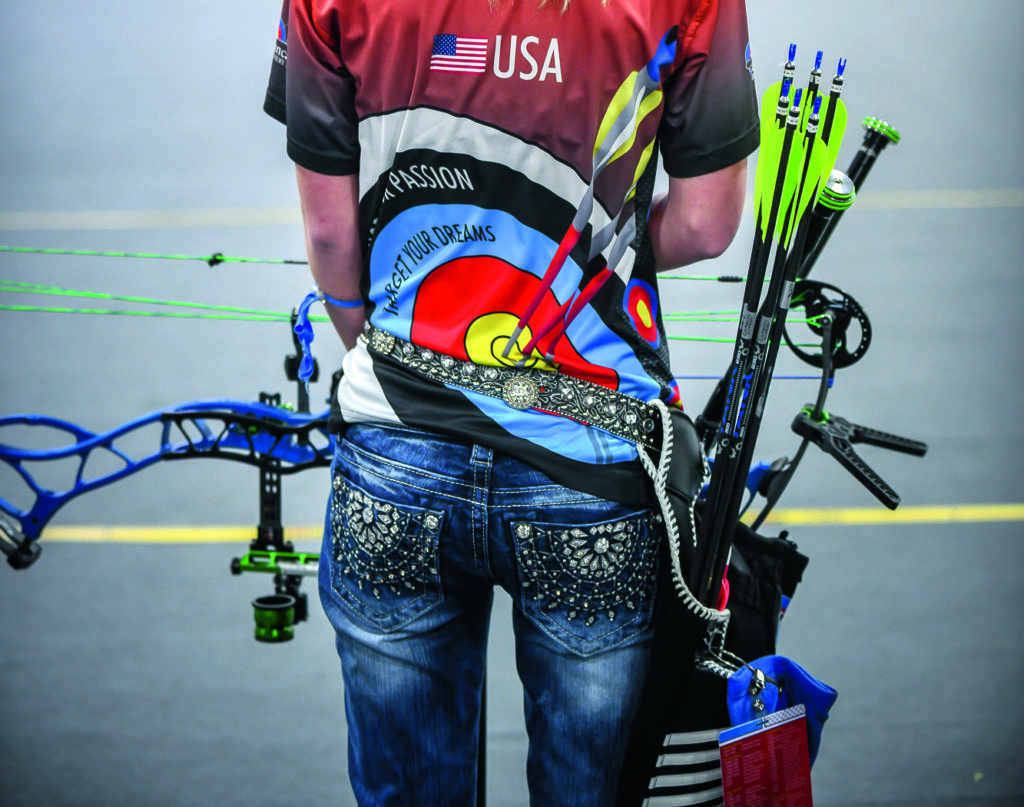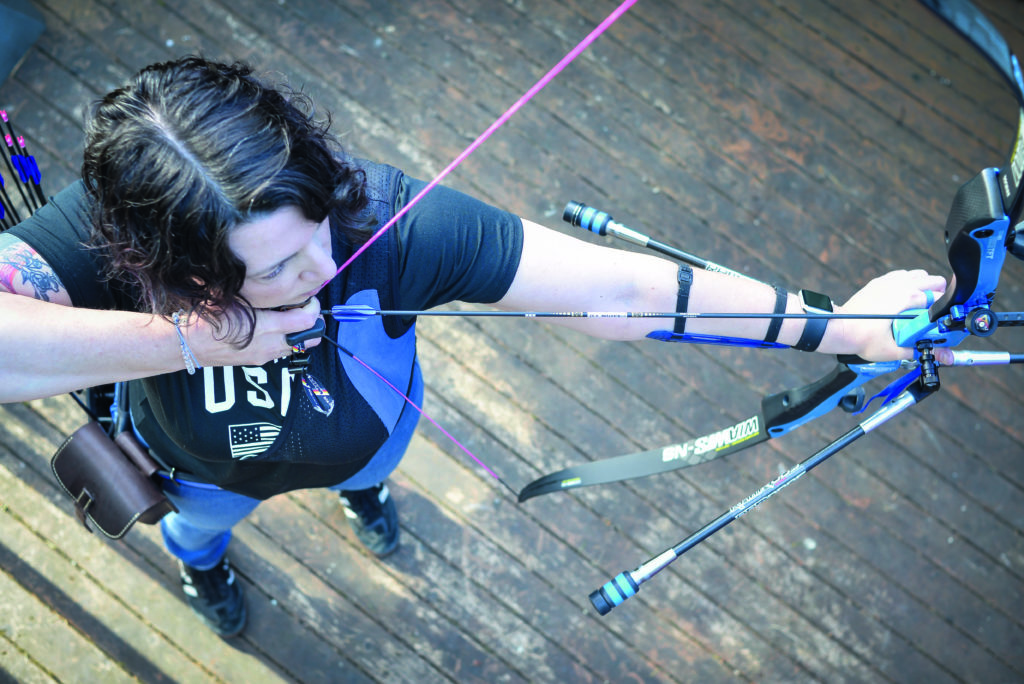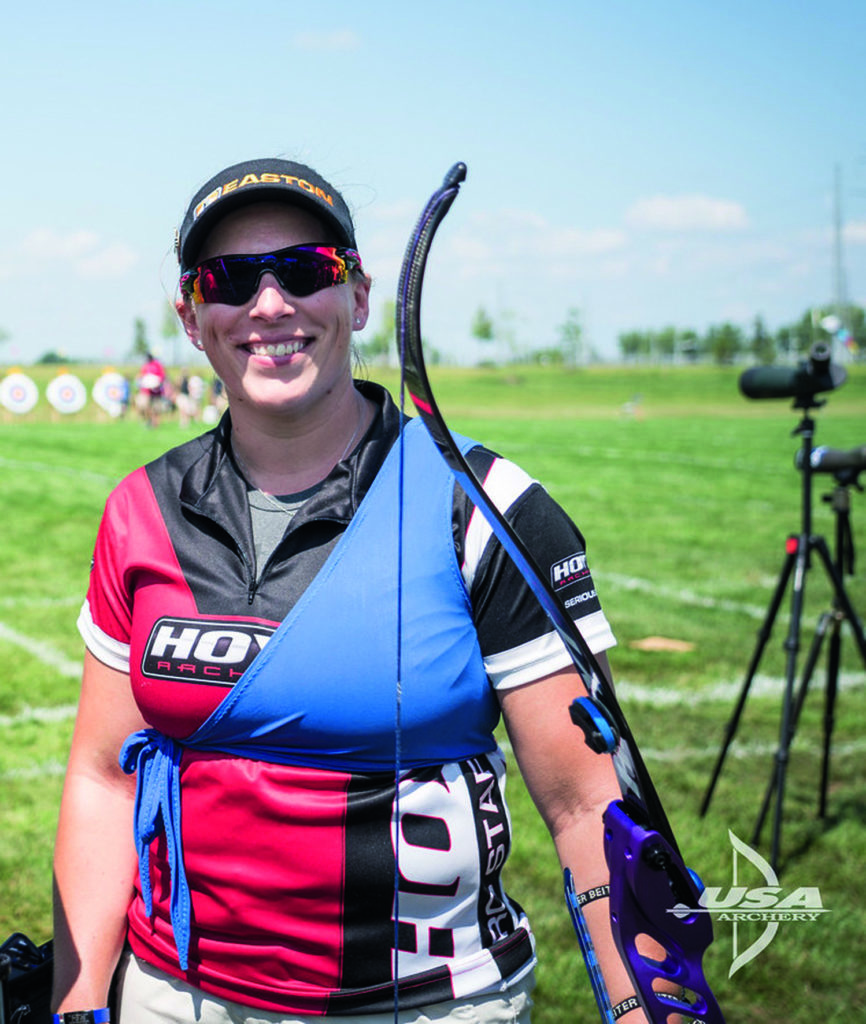
USA senior athlete Amy Skogen has a couple of things to talk about
This article is intended for everyone, but just a warning before we start: a great deal of it will be talking about boobs. When I started learning about archery, I was fortunate to have a community of mentors and coaches to help get me going. Yet it took me a few years to really feel comfortable with the sport – and I have several female peers to thank for that.
There wasn’t just a learning curve for the equipment or tournament rules; there were several literal curves to deal with. My curves, specifically. My breasts affected everything from shooting stance to string interference. My chest was an obstacle, but only because I hadn’t figured out how to deal with it – and neither had my coaches.
Like most sports, archery is still largely designed and taught from a physically male perspective, leaving the rest of us to quietly figure out modifications on our own. Or give up in frustration. Or worse, get injured due to mismatched equipment or improper form for our physical structure.
My boobs just won’t get out of the way. When one of my coaches used to tell me to keep my shoulders set and look down to check my foot position, I had to explain that if I maintain a proper stance, and look down by only moving my eyes and tilting my head, I can’t see my feet.
Let’s start at the bottom: set your feet first. This may seem rudimentary, but foot position affects your strategy for how the string eventually pulls into your boob.
For the first couple of years I shot with a closed stance, because that was the only way I could ensure I got my boob out of the way – having my feet completely perpendicular to the target kept my hips aligned over my feet, and my shoulders aligned over my hips, with a nice consistent side profile where my string could anchor.
The first time I tried an open stance after a coach’s insistence that it was better for clearance issues, can you guess where the string ended up? Between my boobs. Guess what happened when I released the string? Yeah, owww. Not doing that again!
Minimising string contact
How to minimise string contact with your side boob? The easiest way is to shoot compound – they definitely have an advantage with that sharper string angle.
If you’re a dedicated recurve shooter, like me, you can still experiment with improving string angle if you’re OK with some compromises.

I’m on the tall side, so I learned to shoot on a 70 inch bow with long limbs. I really liked how I could work up to my goal draw weight, but still feel smooth draw action on less expensive limbs.
But I was making significant side-boob contact – enough that it drastically added an extra angle in my string, with implications for the tiller of the bow.
Testing a theory on how this affected arrow flight, I found that if I measured my draw weight away from my body I got one number, let’s say 40lbs, but if I used my actual draw motion into my side boob, the extra angle increased the scale to 44.5lbs.
There’s more research to do, measuring angles and playing with tiller, but needless to say this contributed to issues with arrow tuning for those first few years.
I’ve moved to medium limbs now and can tell that those lost 2” helped minimise the string angle a bit – I’m definitely getting less contact now. Going to the extreme, you could even try a 23” riser and short limbs, bringing the bow length down to 64” and really sharpening your string angle.
However, your bow might not be as comfortable – depending on your draw length, you may have a problem with stacking. I’m pretty sure I would still get side-boob contact, so compromising on the feel of the shot isn’t worth it for me – but it might just work for you.
Managing your anchor
Whether you choose an open or closed stance, pay attention to how the string makes contact with your chest. I found it most comfortable and reliable to have an open stance, with my hips lined up over my feet, but with an added ‘coil’ or twist at the waist to line my shoulders up to the target. (This coil is recommended as part of the US national training system.)
However you get there, the important thing is keeping perpendicular and consistent side-boob contact with the string. You’ll learn to feel when the string is in the right place, just as you feel the anchor point on your jaw or nose. You can even experiment with chalking your string to check if you’re anchoring consistently.

You might jump ahead of me and say you already use a chest guard, which is great! But it really starts with the bra. The sports bra is a fairly recent invention. In 1977 three women, Lisa Lindahl, costume designer Polly Smith, and Smith’s assistant Hinda Schreiber, decided to sew two jockstraps together.
One of their early handmade inventions is still on display at the Smithsonian Museum in Washington DC. A lot of women love sports bras for their support, their no-slip shoulder straps and the compression factor.
I dislike their tendency to smoosh everything into one unaboob (unless I’m running) so I prefer a normal structured bra that’s comfortable. As with most things in archery, the important thing is consistency.

Find one you like to shoot in – try it out in all temperatures and weather conditions to make sure you’re not getting chafing or moisture wicking issues – and then buy several.
The variations in underwire, seaming, padding, etc. means that if you’re wearing different bras you’re going to get a slightly different boob anchor and string behaviour every time you go out to shoot.
A bonus challenge is finding a chest guard that fits curves. Many of the standard brands are built for flatter chests – on my shape, some don’t have enough material to cover the string contact area, others pucker weirdly in the armpit.
Some women have made their own chest guard, in the spirit of Lindahl, Smith and Schreiber, or modified a stock one with stiffer fabric. After trying several myself, I finally found Artebo, which is designed by a woman – she’ll even make one to your specific measurements if you need it.
Strengthen your core
There’s one more major curve behind you, of course. Ideal shooting posture includes a strong stance with a nice flat back, particularly your lower back. This involves a lot of tightening your core stomach muscles and tucking your tailbone. Except that bigger bottoms are more difficult to tuck.
Having an extra curvy body means that we’re carrying weight differently than non-curvy bodies – more weight in the front on top, more weight in the back below.
Add to this other factors like wearing heels all week at work, or frequently carrying a heavy backpack by just one strap, and you’ll see that some of us have considerable posture habits to overcome.

Curvy people are not naturally flat-backed, so it’s going to take some work for the archer, and some patience for the coach. Even if you can’t quite tuck your booty, try to visualise it, and know that any movement you can get in the right direction is good progress.
Speaking from experience, from injuries plus many years of poor posture, back pain is no joke. So please, protect your back and work on strengthening your core – you’ll get there.
Looking around, there are plenty of sports featuring successful curvy athletes. Kellie Stenzel, a golf coach and former player, teaches women how to tweak their swing to deal with a larger chest, joking that “no boob mountain is too high to climb.” Similarly, retired beach volleyball player Alena Schurkova has said, “I am 32-E, and I have never found them to be a problem.”
Whether you’re looking to make your own style more comfortable or you’re mentoring others, hopefully these tips will help make the conversation easier for the curvier folks in our sport.


As a male archer, I’d just like to point out that it’s not necessarily the topic of breasts that discourage male trainers to offer better guidance. It does play a pretty important part, though. But almost as equal is the fear of a possibly negative response from the trainee. In today’s society, bringing up such subjects could make a male trainer very exposed to a sexual harassment accusation, one that would be challenged very little and would end in his dismissal, even though he might bring up the topic in a very sensible and professional manner. We can see this happening in society all the time.
So while it is indeed important to offer anyone all the help we can give so they can practice a sport of their choosing, we must also provide support and understanding to the trainers that would have to, in essence, put their careers on the line to discuss these topics.
In any case, a very informative article. I have already shared it with my girlfriend who I suspect struggles with this very issue.
Thanks very much for this article – it’s been an immense help! I am also tall (and not small), using 70″ limbs and 25″ riser, but am loathe to try shorter set up just yet.
Instead, I have invested in the Artebo chest guard. Can’t wait until it arrives!
My coaches have been pretty pragmatic, which I absolutely appreciate. I’ve joked about going full Amazonian. But, it is tricky to solve for if you haven’t felt it first hand. So again, thanks for the info!